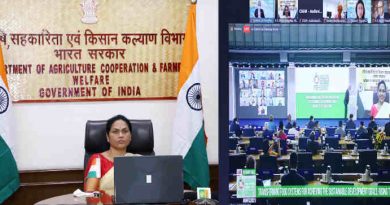Extreme Weather and Climate Change Secrets
Striking images and video are streaming in from over 1,000 events in more than 100 countries where people are “connecting the dots” between climate change and extreme weather. The events are part of a global effort called “Climate Impacts Day,” organized by the international climate campaign 350.org.
The events are the evidence of how the string of weather disasters over the last year is increasing public concern about global warming.
In New Mexico, for example, firefighters standing in the remains of the Santa Fe Forest, which was burned last summer during the state’s worst wildfire in history.
[ Also Read: Scientists Exploring Possibility of Life on Mars ]In Pakistan, a group of women holding dots in front of the makeshift shelter that became their home after the devastating floods in 2010 that displaced over 20 million people.
In Lebanon, over 1,000 students making their dots the wheels of a giant bicycle to protest air pollution and request more bike-lanes to combat the problem.
In Vermont, citizens unfurling a “dot” banner at the site of a covered bridge that was swept away in the devastating flooding brought on by Hurricane Irene last August.
[ Also Read: Case of Climate Change; not Global Warming ]Also, climbers will unveil giant dots on melting glaciers, divers will carry dots underwater to bleached coral reefs, and more hi-res photos and videos will stream into the ClimateDots.org website that is serving as a virtual hub for Climate Impacts Day.
Recently, Metcalf Institute for Marine & Environmental Reporting presented The Grantham Prize for Excellence in Reporting on the Environment to James Astill of The Economist.
Astill received US$75,000 for “The World’s Lungs: Forests, and How to Save Them,” an 8-part special report on the state of global forests and the rising threats they face from human exploitation and climate change. (Read: Journalism Award for Astill of The Economist)
“We just celebrated Earth Day. May 5 is more like Broken Earth Day, a worldwide witness to the destruction global warming is already causing,” said Bill McKibben, the founder of 350.org, the global climate campaign that is coordinating the events. “People everywhere are saying the same thing: our tragedy is not some isolated trauma, it’s part of a pattern.”
Seven in ten Americans now believe that “global warming is affecting the weather,” according to a recent poll conducted by Yale University. Over 80% of Americans have personally experienced an extreme weather or natural disaster in the last year.
“No one wants pity—they want the recognition that these tragedies are part of a pattern, and they want swift action to stop that pattern from getting worse,” said McKibben. “Our only hope is to kick fossil fuel, and as these images make clear we better do it fast.”
In the picture above: On the beach in Orissa, India, artist Sundersan Pattanaik creates a sand sculpture that depicts the extreme heat facing India and connects the dots to climate disruption.






